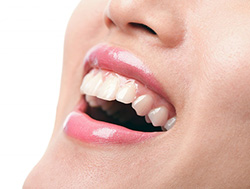Periodontal Treatment in Alhambra, CA

What is periodontal treatment?
Dr. Andrew Mutch knows how important it is to give gum disease immediate attention because, if left untreated, it could lead to the soft tissues that support the teeth. Periodontal treatment is a specialized branch of dentistry that specializes in the treatment of gum disease and is a crucial component in managing symptoms of gum deterioration such as swelling, purple or red discoloration, tenderness, receding gum line, bad breath, pus formation, a chronic bad taste in the mouth, development of spaces in between the teeth, and loosening of teeth.
What are the methods used in periodontal treatment?
For gum disease to be diagnosed, the dentist must conduct a full examination of the patient’s teeth and related oral structures to check for plaque and tartar buildup, which are the most notorious precursors of gum disease. A metallic probe will be used to measure the depth of the gingival sulcus, or the spaces in between the teeth and gums, in suspected locations throughout the mouth, to help dentists assess the extent of the disease. Nonsurgical and surgical periodontal treatments will be utilized in accordance with the need of the patient, to prevent the aggravation of the disease.
Non-surgical Treatment
Nonsurgical treatments include the removal of tartar buildup beneath the gum tissues or on the tooth surfaces, in a process called scaling. Another technique is root planing wherein the roots of the teeth will be smoothed out to help prevent plaque and tartar to adhere to the surfaces. Additionally, antibiotic regimens will be prescribed by the dentist to minimize bacterial infection.
Surgical Treatment
Surgical treatment in periodontal disease is only used in severe cases of periodontal disease when the patient does not respond to the previously mentioned noninvasive techniques. Pocket reduction surgery or flap surgery is a surgical technique where tiny incisions on the gums allow the dentist to lift a portion of the tissue back to expose the roots of the teeth so that they may be scaled and planed as necessary.
In cases where the patient’s gum line has already begun to recede, soft tissue grafts may be used to replace the damaged gum tissues. Gum grafts are typically obtained from the roof of the patient’s mouth and then surgically attached onto the affected tissues. Bone grafting may also be indicated in more severe cases, whereby a small fragment of bone is used to repair the deteriorated structure that surrounds the roots of the teeth.
Guided Tissue Regeneration
Similarly, a process called guided tissue regeneration; healthy bone regrowth is stimulated by the insertion of a piece of biocompatible material in between the existing bone and the existing tooth. Another surgical technique is enamel matrix derivative application, which involves the use of a specialized gel formulation applied directly onto the roots of the tooth to stimulate the growth of healthy bone and tissues.
Request an appointment, or contact the office of Dr. Andrew Mutch.



